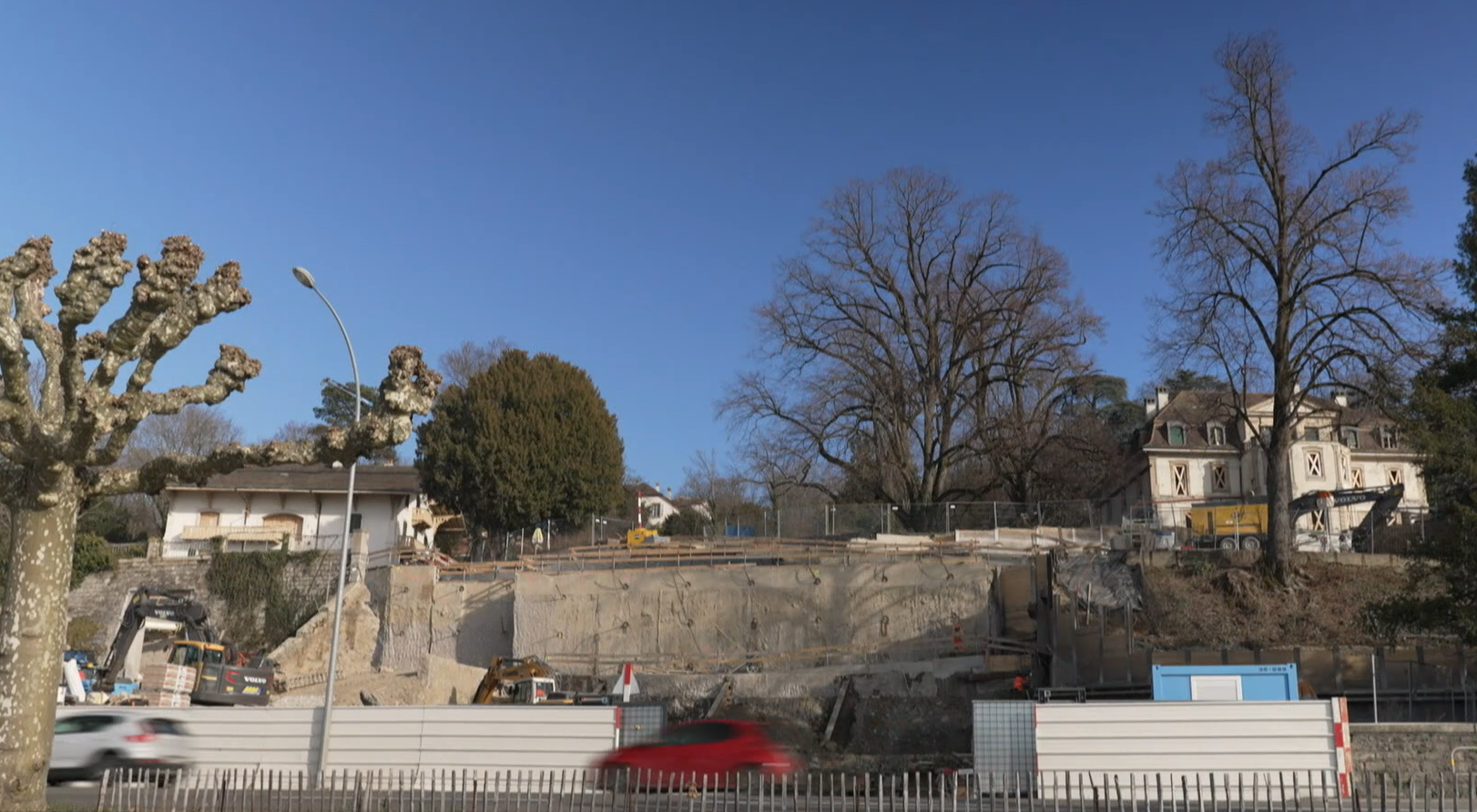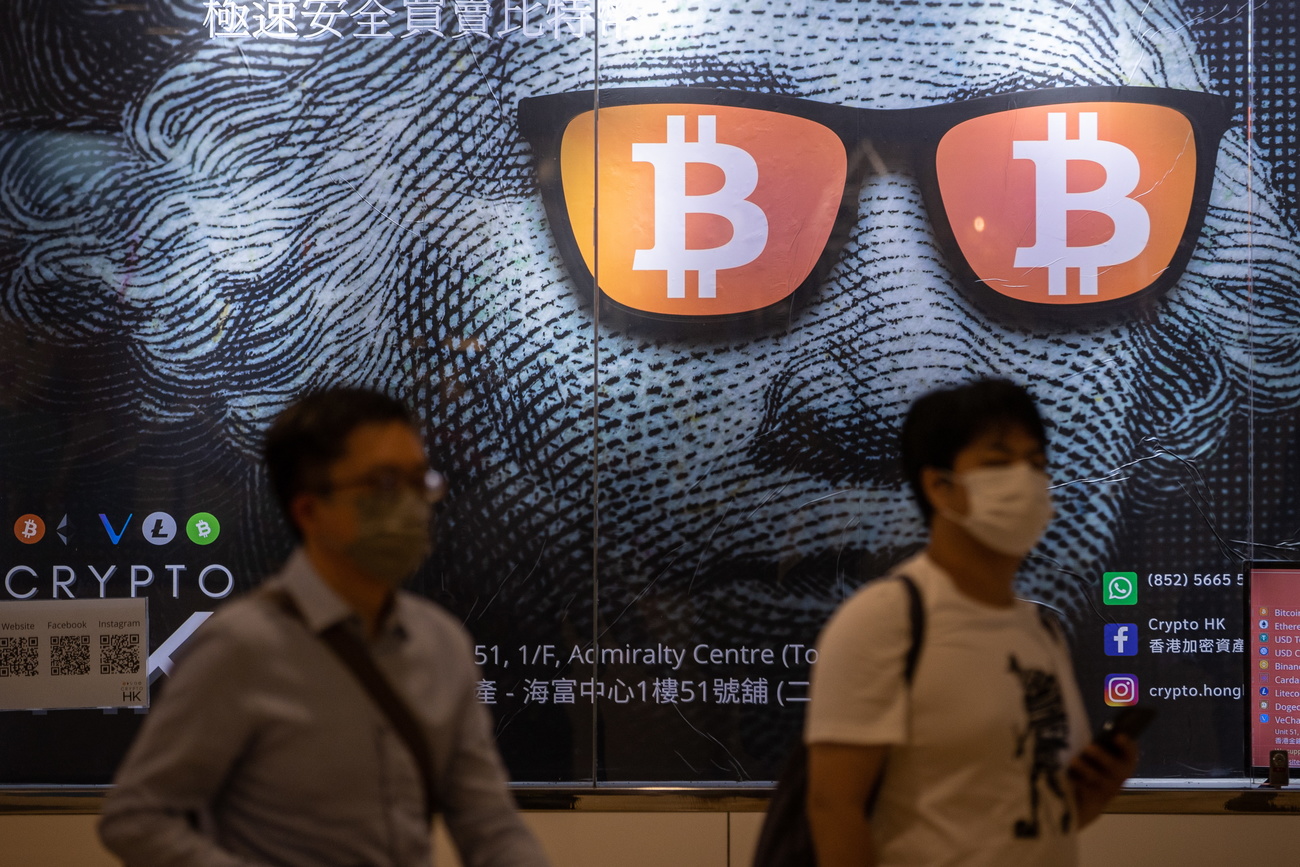The art of making millions (by accident)
Non-fungible tokens (NFTs) sound like fun. The latest blockchain craze is turning obscure artists into overnight millionaires. This includes two Swiss artists who stumbled onto a pot of gold via some do-it-yourself tinkering with the new technology.
The world of blockchain constantly throws up strange stories and NFTs are no exception.
What are NFTs? Non-fungible (unique) + token (digital code that lives on the blockchain) = a piece of blockchain digital code that represent a unique asset.
Great, but what do they do? They can be programmed as deeds of covenant or ownership contracts for objects such as art. The blockchain is a convenient digital system that keeps up-to-date, transparent records of who owns, sells and buys such contracts.
Imagine making a living as a digital artist when anyone can make limitless perfect copies of your work. The answer is to attach an indelible digital anchor to the original. NFTs fulfil this task and can be programmed to automatically send royalties to the artist when their works are sold on.
“Traditionally, an artist has one chance to make money with their work and then it’s gone. You don’t see any royalty returns from the secondary market,” Johannes Gees, one of the two Swiss artists in question, told me. “With NFTs, the artist is in charge. This little thing changes my whole standing in the art market, to my favour.”
Gaining momentum
It’s a story I’ve been hearing continuously this year. A range of artists, including Geneva-based Charlotte Qin, were queuing up at the Crypto Valley Conference in Switzerland last month to explain how NFTs are transforming the art market.
The NFT art market really took off this year, with US artist Beeple selling one work for $69 million. CryptoPunks, a series of blocky digital characters, has proved a runaway success for Larva Labs.
And it’s not just art. Twitter founder Jack Dorsey has sold an NFT linked to his first ever tweet while Tim Berners-Lee successfully auctioned an NFT of the World Wide Web original source code. Even the Swiss Post Office has dabbled with NFTs, linked to postage stamps.
All of this was a long way from Gees’s thoughts when he launched the Kleee02 NFT project in early 2019 with fellow artist Kelian Maissen. “We were just playing to see what was possible. It was like a proof of concept.”
A few friends bought a handful of the 360 NFTs created, and then nothing. “I actually started losing interest because I thought that no-one really understood NFTs,” says Gees. “There was some hype earlier this year, but I thought it was just hype.”
Glitch in the system
The in August everything changed. Within a couple of days all their remaining NFTs were snapped up and the two artists were suddenly sitting on a haul worth around CHF1.4 million.
The paper-thin catalyst was investors noticing that the Kleee02 NFT was launched in the same week as a successful Cryptopunk NFT in 2019. That was all it took to make Kleee02 an overnight hit.
But there was a problem. The DIY system, built by two hobby blockchain enthusiasts, could not cope with the sudden demand, meaning several investors did not get what they had paid for. Some hasty refunds reduced the artists’ earning to around CHF1 million, but that’s still enough to invest in future NFT projects, says Gees.
So what can we learn about all this?
The NFT hype has reached boiling point, but we don’t yet know if it’s another blockchain bubble ripe for bursting. The outrageous sums lavished on NFTs are usually from cryptocurrency millionaires who want to support the latest blockchain craze. Connecting NFTs to the mainstream market will, as ever, be the proof of whether this pudding tastes good or collapses the moment it’s taken out of the oven.
Gees says that NFT technology has improved since he constructed his flawed model. The Kleee02 story, with its associated problems, is typical of the open source ‘everyone can have a go’ blockchain scene. Bugs, hacks and creaky coding have blighted some crypto exchanges and decentralised finance projects in the past – and will probably continue to do so. A robust technical infrastructure, combined with rules that ensure investor safety, is still a work in progress.
Inevitably, there are less wholesome stories emerging – artists seeking to inflate prices by buying their own NFTs for large sums or money launderers being attracted to the craze. It should be noted, however, that just about every asset attracts unsavoury characters and practices.

In compliance with the JTI standards
More: SWI swissinfo.ch certified by the Journalism Trust Initiative










You can find an overview of ongoing debates with our journalists here . Please join us!
If you want to start a conversation about a topic raised in this article or want to report factual errors, email us at english@swissinfo.ch.